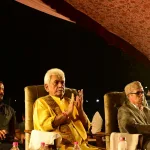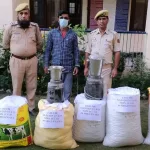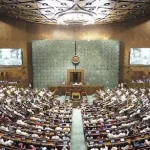The survival of humans, animals, and plants depends on the health of their ecosystems so by protecting wildlife health, we safeguard biodiversity and invest in a healthier, more sustainable future. Wild animal health care aims to identify and promote solutions for more effective monitoring and early detection of diseases through animal regular heath check control programs which is a key componentof animal welfare. Wildlife veterinarian has not only a broad education in comparative medicine but also are also highly trained in recognizing, diagnosing and understanding disease impact on public health as well as on individuals, populations and whole ecosystems.
Their skills and expertise turn them into valuable key players in planning, implementing and effectively assisting rescue and rehabilitation, both in-situ and ex-situ conservation methods and rescue of animals in distress and conservation of worldwide fauna flora, and protection of animal welfare in whole. Wildlife veterinarians play a vital role in both conservation efforts and mitigating human-wildlife conflict throughout world. They are managing health and well- being of wild animals, both in the wild and captivity. They also work to mitigate the negative impacts of human-wildlife conflict on both humans and wildlife. Wildlife veterinarians play a vital role in the capture of menace-causing wild animals. They are responsible for ensuring that the capture process is safe and humane for both for the animal and the capture team.
Wildlife veterinarians typically work with other professionals, such as forest rangers, wildlife biologists, and capture experts, to develop and implement a capture plan. The capture plan is tailored to the specific species of animal being captured, and it takes into account the animal’s age, sex, health condition, and the environment in which it is being captured. Before attempting capture, veterinarians consider the biological aspects of the targeted species, the immobilization techniques required, and the transport methods for captured animals. Chemical restraint employed by the wildlife veterinarians has to been successfully conducted to relocate or treat animals in the captivity as well as in the wild resulting in the rescue of many rare and critically endangered species in order to minimize risks of anaesthesia to subject animals.
Wildlife Veterinarians also need to be able to react appropriately using the correct equipment with sufficient skill to deal with anything that may go wrong during the capture. Use of anaesthetics, dose of medicine, route of administration, type of needle, size of gauge, dart pressure, site of traquilization, position of restraining, and use of appropriate antidotes is all the domain of a wildlife veterinarian. The fate of rescued animals in terms of stress management during rescue and rehabilitation is all together a technical part that can be best judged by a veterinarian who can understand animal pain, discomfort, stress level, and other symptom-based ailments of rescued animals. Once a capture plan has been developed, wildlife veterinarians are responsible for selecting the appropriate capture drugs and dosages. They are also managing monitoring of the animal’s health during the capture process and providing veterinary care as needed.
After the animal has been captured, wildlife veterinarians are assessing its health and fitness for release. Wildlife veterinarian has a mandate for providing immediate medical/health care to injured or sick wildlife with necessary medications, control of immobilization equipment, and first aid provisions. Wildlife veterinarians ensure the availability of emergency medicines, transport containers, and other essential resources to effectively manage wildlife health emergencies. The specialized equipment’s, darts, cages, and other operative gears used during mitigating of human-wildlife conflict are also animal specific and can be best be decided by a veterinarian as far as the technicality of the issue is concerned.
All the rescue operations in valley are being augmented with the training programmes and practical demonstrations to frontline warriors throughout year and that too is being conducted by a wildlife veterinarian. The role of wildlife veterinarians in conservation and human-wildlife conflict mitigation in India is of utmost importance. Their expertise in understanding wildlife, managing disease outbreaks, and implementing conservation strategies is instrumental in maintaining the delicate balance between human settlements and wildlife habitats.
By collaborating with various stakeholders and utilizing scientific knowledge, wildlife veterinarians contribute significantly to the preservation of overall unique biodiversity. Further more the sensitivity of involvement of scheduled wild animals, technicality of the process and professionalism in managing MAC (Man animal Conflict), and overall animal welfare the monitoring rescue operations w.r.t MAC strictly a domain of a wildlife veterinarian.
Although a strong support of respective wildlife wardens, foresters, range officers, frontline workers, health institutions, police, disaster management has to be a part of this overall operation but guidelines for planning and mitigation has strictly to be followed as per directions and guidelines conveyed by CZA (central zoo authority) and can be best undertaken under the supervision of a wildlife veterinarian only.
(Author is Incharge Veterinary officer, Department of Wildlife Protection Kashmir Feedback: [email protected])





